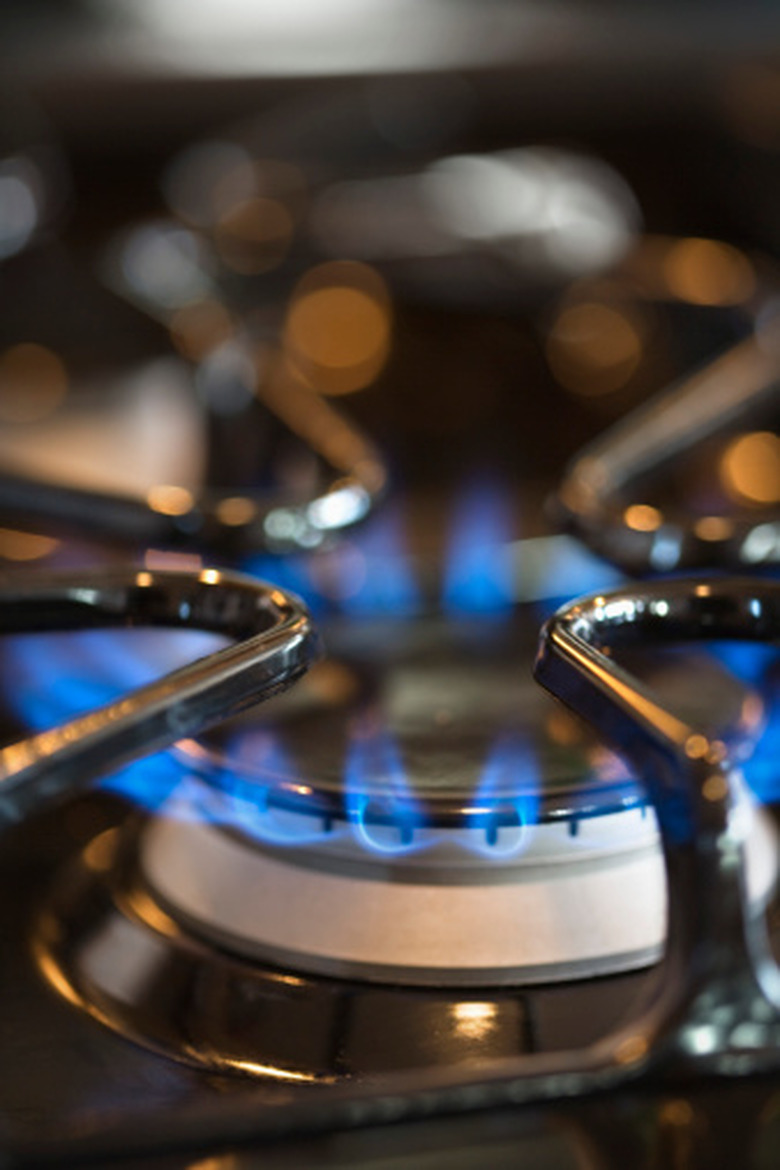What Are Methane, Butane & Propane Gases?
Methane, butane and propane gases are all examples of hydrocarbons, which are organic compounds of carbon and hydrogen. These three gases, together with trace amounts of other gases and another hydrocarbon called ethane, comprise the fossil fuel known as natural gas.
Natural Gas
Natural Gas
Natural gas is a fossil fuel occurring in underground reservoirs often located near petroleum deposits. In its raw form, natural gas is odorless and colorless, but highly combustible. It burns relatively cleanly — meaning it releases fewer pollutants than other fuels — and typically is used to heat homes, cook food and generate electricity. The distinctive rotten egg smell associated with natural gas piped into homes results from an odorant called Mercaptan, deliberately added for easier detection of natural gas leaks, which can become explosive in higher concentrations.
Methane
Methane
A molecule of methane, abbreviated as CH4, contains one atom of carbon and four atoms of hydrogen. Even in its raw form, natural gas is comprised of 70 to 90 percent methane. Processing removes most other gases and hydrocarbons, producing a natural gas fuel that is almost pure methane when it is piped into homes. Although primarily used for energy purposes, methane is also used to formulate chloroform, formaldehyde, some freons and other substances. Scientists can synthesize methane by distilling coal.
Butane
Butane
The term butane refers to either of two gaseous hydrocarbons whose molecules each contain four carbon atoms and 10 hydrogen atoms (C4H10). When the molecule's carbon atoms are arranged in a straight chain, the result is called normal butane or n-butane; when the atom chain appears branched, the molecule is called isobutane. Both are present in natural gas and crude oil and are produced in quantity when crude oil is refined into gasoline. Highly flammable but odorless, colorless and easily liquefied, butane fuels cigarette lighters and portable stoves and increases volatility in gasoline.
Propane
Propane
Gaseous in its natural form, propane is extracted during the refining of crude petroleum and the processing of natural gas, which contains about 5 percent propane. Each molecule of propane (C3H8) contains three carbon atoms and eight hydrogen atoms. In practical usage, propane is generally stored in its less voluminous liquid form in a distinctive tank, such as one might see attached to an outdoor gas-powered grill or to a recreational vehicle with gas-powered appliances for cooking, heating and refrigeration. Propane often serves as a main source of power for homes in rural areas without access to natural gas lines.
Cite This Article
MLA
Bishopp, Kristie. "What Are Methane, Butane & Propane Gases?" sciencing.com, https://www.sciencing.com/methane-butane-propane-gases-8179985/. 24 April 2017.
APA
Bishopp, Kristie. (2017, April 24). What Are Methane, Butane & Propane Gases?. sciencing.com. Retrieved from https://www.sciencing.com/methane-butane-propane-gases-8179985/
Chicago
Bishopp, Kristie. What Are Methane, Butane & Propane Gases? last modified March 24, 2022. https://www.sciencing.com/methane-butane-propane-gases-8179985/
